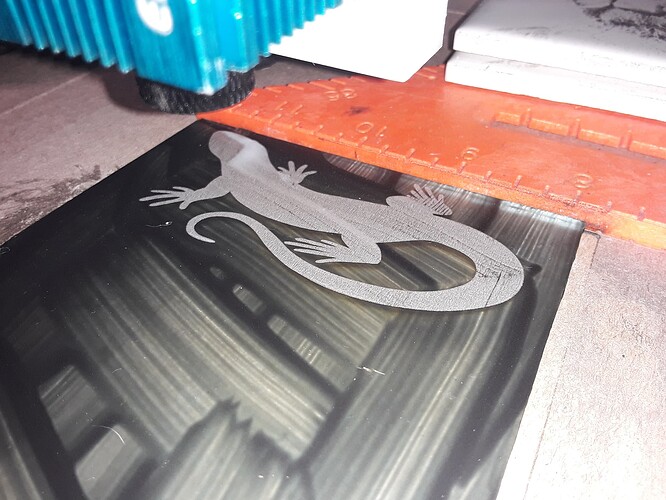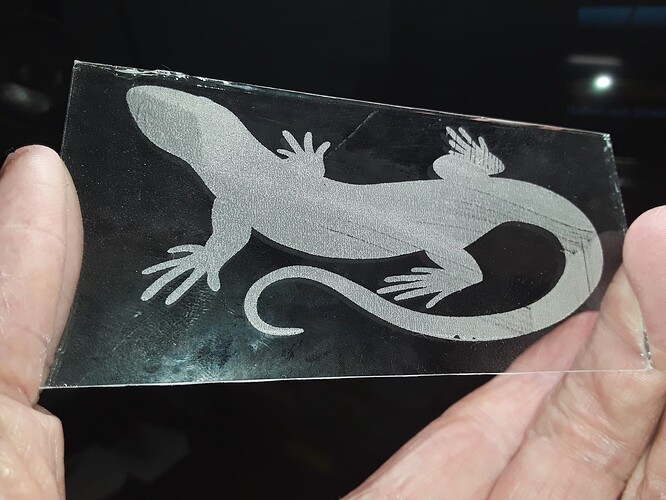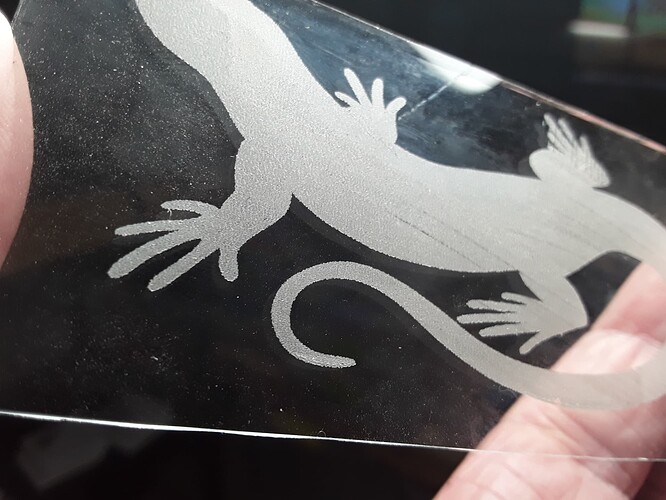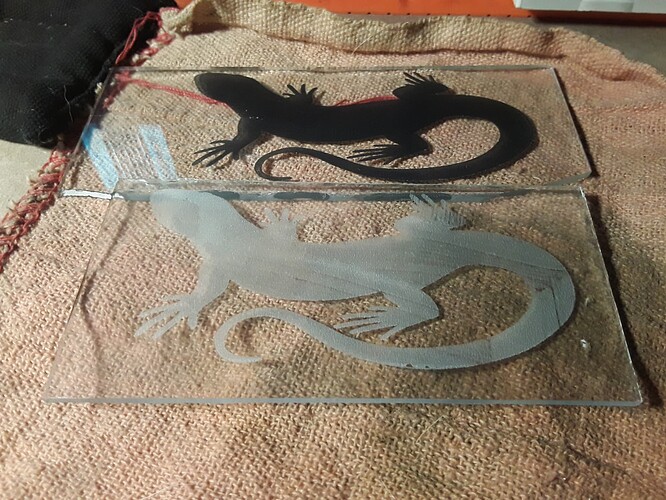Another fun and enlightening test…
On another of the forums I keep up with, the subject of engraving ceramic tiles and glass was being discussed. One of the posters (@DrPete) was suggesting using black tempera paint to coat the glass prior to lasering… and showed a simple test he’d done, a few circles etched on a piece of glass. Because the circles had an etched/frosted look to them (as opposed to the black images fused onto the surface with NWT) and the method was simple enough, I decided to give it try.
So, not really knowing what to expect and taking no particular pains to be neat, I followed @DrPete’s instructions as best I could. I quickly brushed Walmart black tempera paint on a not-so-clean piece of broken window pane and lasered an image with the same little Eleksmaker 2.3W diode laser I use for the NWT ceramic tiles. To say I’m pleasantly surprised with the result would be an understatement…
To adjust for my lesser-powered laser (compared to @DrPete’s 10W laser) I used 1000 mm/min and 90% power… and got a genuinely frosted/etched image on the glass on my first attempt. Given the brush strokes in the paint were so inconsistent and streaky, I was surprised the etched surface still shows a relatively nice opaque image. But there are a few lines and streaks can be seen to coincide with some of the inconsistencies in the painted surface so I suspect a more uniform painted surface would yield a better result. Anyway, I’m encouraged with the attempt and feel it warrants a bit more playing, especially with trying to get a more uniform painted surface.
In summary… with the same laser, same glass, same image, but different paint…
flat-WHITE spray paint yields DARK embossed image… BLACK tempera paint yields LIGHT frosted image
How weird is that?
– David



